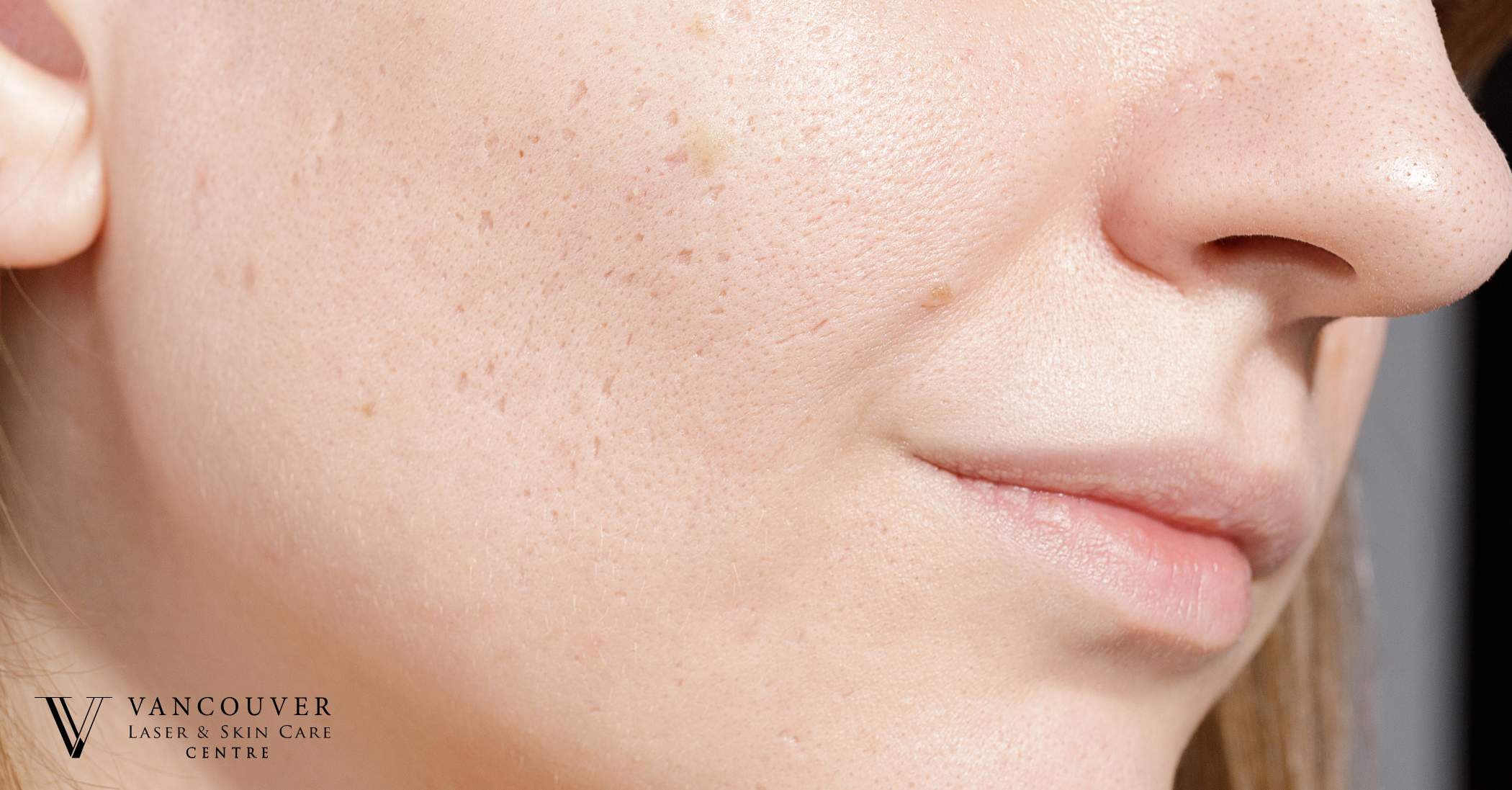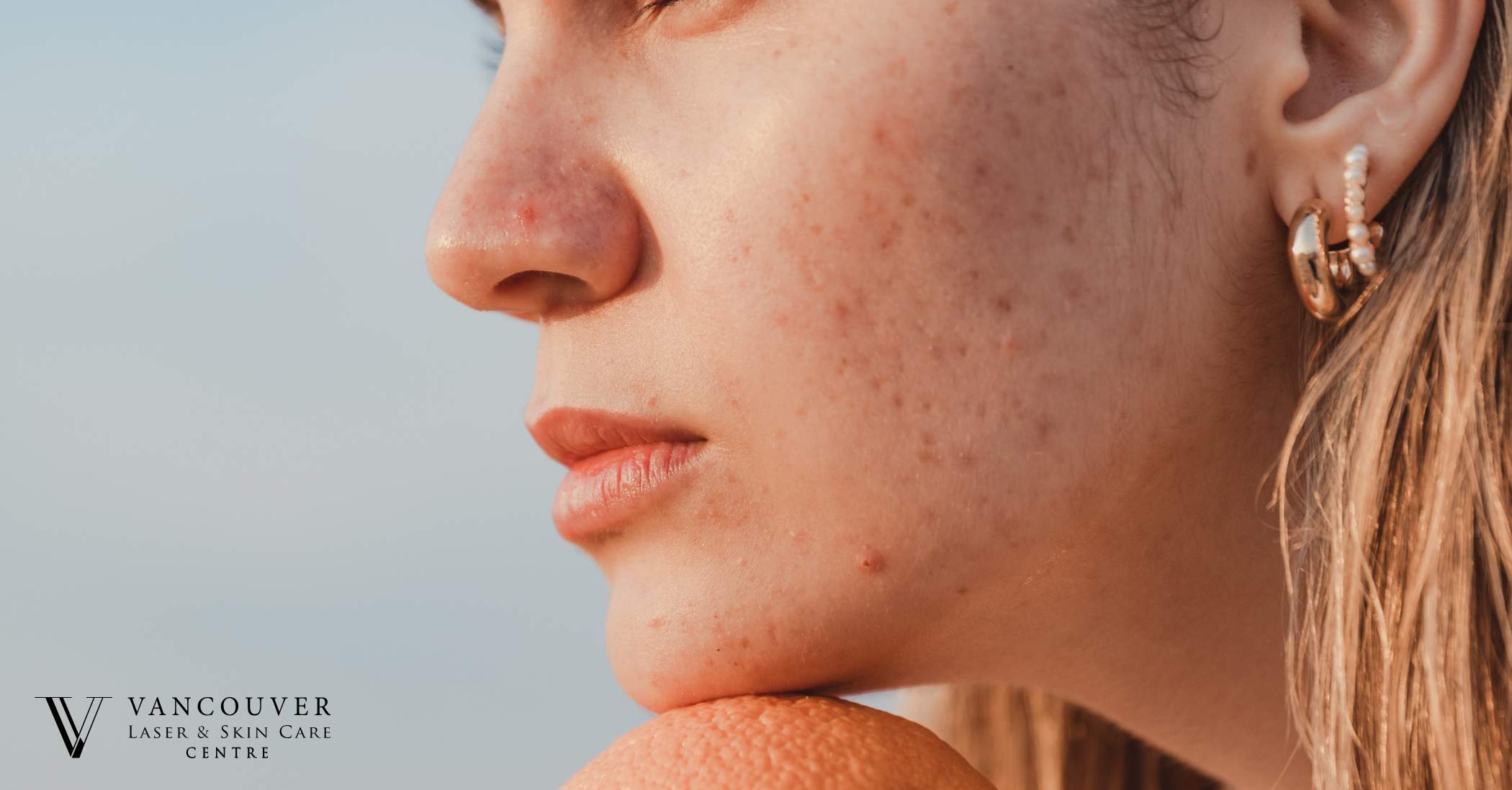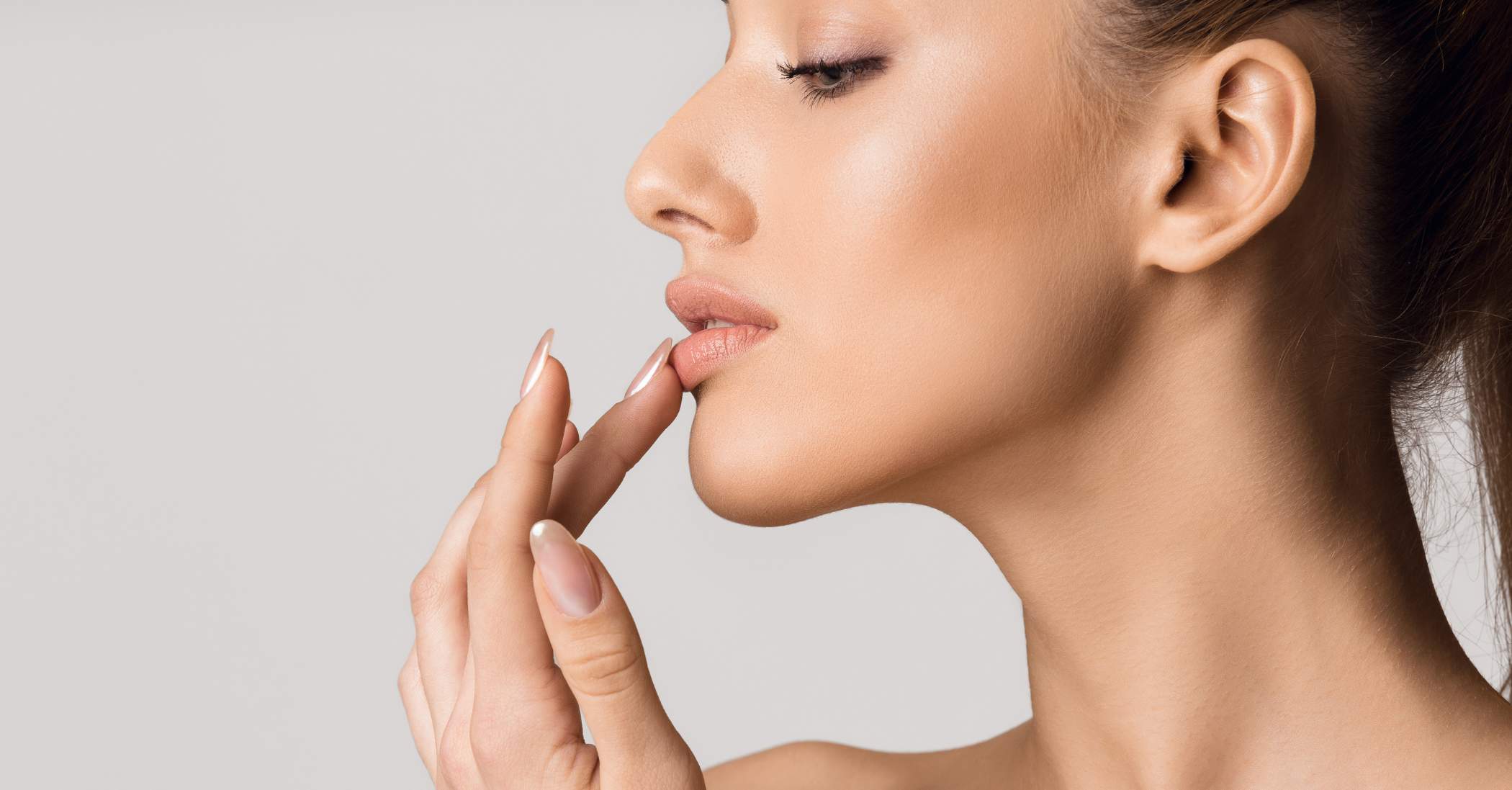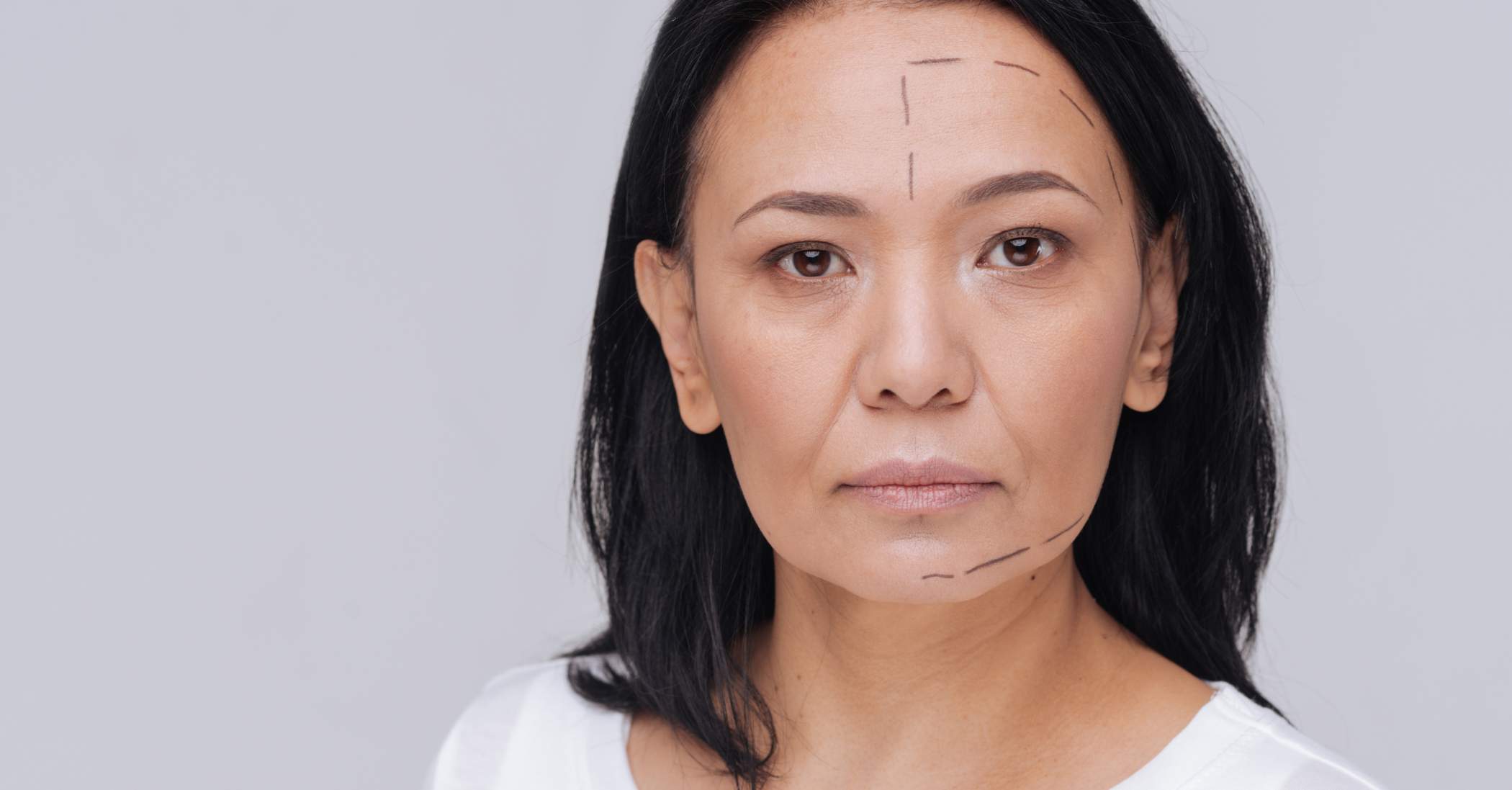Acne scars are a lasting concern for those who’ve experienced severe or persistent breakouts. Understanding the types of scars and how they form is crucial for effective treatment and prevention.
This blog explores different acne scars, from shallow marks to deep indentations, and highlights proven solutions to achieve smoother, clearer skin.
Types of Acne Scars
Acne scars vary in appearance, severity, and treatment needs. Understanding the different types can help you identify the most suitable treatment for your skin. Below are the five most common types of acne scars:
Atrophic scars
Atrophic scars are flat, shallow indentations that form below the epidermis. Severe cystic acne is a common cause, though other forms of acne can also result in these scars. Atrophic scars are categorized into three subtypes:
Ice Pick Scars
Ice pick scars are deep, narrow depressions that resemble small puncture holes. They form when underlying tissue is significantly damaged, often due to cystic acne or severe breakouts. These scars are challenging to treat and typically require more aggressive solutions.
Will ice pick scars ever go away?
Ice pick scars may not completely disappear, but various treatments can greatly improve their appearance. Effective options include:
- Subcision: A minimally invasive procedure that breaks up scar tissue beneath the skin, promoting collagen production and skin regeneration.
- Dermal Fillers: Fillers can elevate the scars, making them less noticeable.
- Laser Resurfacing: This treatment stimulates collagen production and enhances skin texture.
- Microneedling: By creating tiny punctures in the skin, microneedling encourages collagen production and reduces the visibility of scars.
Boxcar Scars
Boxcar scars are wide, shallow depressions with defined edges. They commonly appear on the cheeks and jawline, caused by inflammation that damages the skin’s structure. These scars can affect the skin’s overall texture but are less severe than ice pick scars. Treatment options include:
- Chemical Peels
- Microneedling
- Subcision

Rolling Scars
Rolling scars create a wave-like texture on the skin due to fibrous tissue beneath the surface. They are caused by long-term inflammation, which pulls the skin downward, leading to unevenness. Treatments like dermal fillers, microneedling, and laser resurfacing can significantly improve their appearance.
Hypertrophic Scars and Keloid Scars
Hypertrophic scars are raised scars that form above the skin’s surface when excess collagen is produced during the healing process. They are more common in individuals with darker skin tones. Treatments to flatten these scars include:
- Silicone Gel Sheets
- Steroid Injections
- Laser Therapy
Keloid Scars
Keloid scars are a more severe form of hypertrophic scars. They are larger, raised, and extend beyond the original acne lesion. These scars can be difficult to treat, especially for those with darker skin tones. Effective options include:
- Corticosteroid Injections
- Cryotherapy
- Laser Therapy
Multiple treatment sessions may be needed to achieve noticeable improvements.
Pigmented Scars
Pigmented scars are not true scars but areas of discoloration from post-inflammatory hyperpigmentation (PIH). They appear as dark spots or patches after acne heals, especially in those with darker skin tones. While these marks often fade naturally over time, treatments like topical vitamin C, retinoids, or chemical peels can speed up the process.
5 Causes of Acne Scars
Acne scars result not just from acne but also from how the body heals after breakouts. Knowing their causes can guide prevention and treatment.

1. Severe Inflammation
Inflammation is the main cause of acne scars, as it damages surrounding tissue. Severe inflammation, like in cystic acne or nodules, increases the risk of scarring.
2. Picking or Squeezing Pimples
Picking or squeezing acne pushes bacteria deeper into the skin, worsening inflammation and tissue damage. This increases the risk of permanent scarring.
3. Delayed or Inadequate Treatment
Ignoring acne or using ineffective treatments can worsen inflammation, increasing the risk of scarring. Early, proper care helps prevent scars and control breakouts.
4. Genetics
Genetics play a significant role in the formation of acne scars. If scarring is common in your family, you may be more prone to it. Genetic factors influence your skin’s healing process and how it responds to inflammation.
5. Delayed Healing
Delayed healing increases the risk of scarring, as slow recovery allows more time for scar tissue to form. Age, skin type, and health can affect healing speed.
How to Prevent Acne Scars
Although it may not always be possible to completely prevent acne scars, you can take proactive steps to reduce their likelihood. Here are some effective prevention tips:
- Avoid Picking or Popping Pimples: This habit can worsen inflammation and increase the risk of scarring. Let your skin heal naturally instead.
- Gentle Cleansing: Use a mild cleanser that won’t irritate your skin or strip it of its natural oils. Keeping your skin calm can prevent irritation that leads to scarring.
- Moisturize Regularly: Hydrated skin is less prone to irritation and dryness, which can worsen acne and increase the chance of scars.
- Sun Protection: Apply sunscreen daily to shield your skin from harmful UV rays. Sun damage can darken existing scars and slow the healing process.
- Seek Professional Treatment: Consult a dermatologist if you struggle with acne. A personalized treatment plan can help manage breakouts effectively and reduce the risk of future scarring.

Do Acne Scars Fully Fade?
The ability of acne scars to fade depends on several factors:
Type of Scar: Atrophic scars improve with fillers or laser therapy but may not disappear entirely. Hypertrophic scars flatten over time with steroid injections. Pigmented scars fade more quickly with topical treatments like vitamin C or hydroquinone.
Severity of Acne: Severe acne often causes deeper, harder-to-treat scars, especially when lesions are picked or squeezed.
Treatment Options: Procedures like microneedling, chemical peels, and laser resurfacing can significantly reduce scar visibility.
Time and Healing: Scars fade gradually as the skin heals, but consistent care and collagen-boosting therapies can make them much less noticeable.
What are the hardest acne scars to get rid of?
Ice-pick scars are among the hardest acne scars to treat due to their deep, narrow shape. However, modern dermatology offers effective treatments to reduce their appearance.
Some of the most promising options include:
- Subcision: A minimally invasive procedure that breaks up scar tissue to promote collagen production and skin regeneration.
- Dermal Fillers: Injectables that elevate the scarred area, creating a smoother appearance.
- Microdermabrasion: For minor scars, microdermabrasion can help remove the outer layers of skin while promoting healthy blood flow to the area, aiding in healing.
- Sylfirm X: It treats textural issues like large pores and acne scars with the most effective radio-frequency micro-needling treatment available.
- Laser Resurfacing: Treatments that stimulate collagen production and enhance skin texture.
- Fractional Resurfacing: If your skin is healing more slowly after acne breakouts, this customizable laser peel can help soften and fade the residual pigment and indentations left behind.
While ice-pick scars may not completely fade, professional treatments can dramatically reduce their visibility, helping you achieve smoother, clearer skin. At Vancouver Laser & Skin Care Centre, we provide advanced solutions for acne scars. Contact us today to schedule a consultation and take the first step toward healthier-looking skin.
Conclusion
Acne scars can be challenging, but understanding their types and causes is the first step toward effective treatment.
From professional procedures like microneedling and laser therapy to preventive measures such as gentle skincare and early acne treatment, there are options to improve skin texture and minimize scarring.
With the right approach, achieving smoother, healthier skin is possible.
FAQs
1. How long does it take for acne scars to fade?
The fading process depends on scar type and treatment. Pigmented scars may fade in months, while deeper scars require longer treatments like microneedling or laser therapy.
2. Can I prevent acne scars?
You can reduce their likelihood by avoiding pimple popping, using gentle skincare, and treating active acne promptly to minimize damage and scarring.
3. What treatments are effective for acne scars?
Treatments like laser resurfacing, microneedling, chemical peels, and dermal fillers significantly improve scars. Your dermatologist will determine the best option for you.



